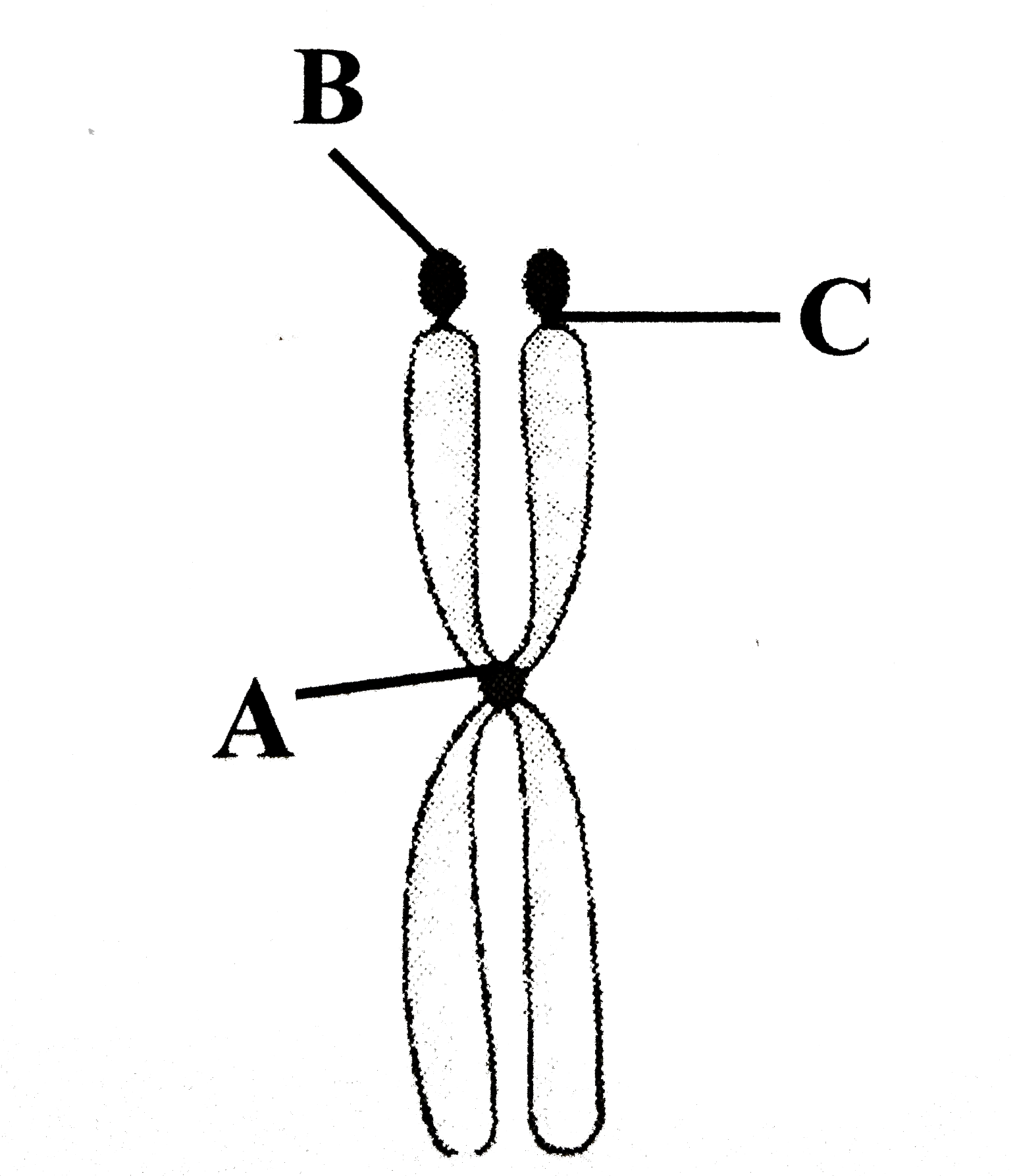What attributes does a chromatid requires to be classified as a chromosome ?
To classify a chromatid as a chromosome, it must possess certain attributes. Here’s a step-by-step explanation of these attributes:
1. Definition of Chromatid: A chromatid is one half of a duplicated chromosome. When a chromosome replicates, it consists of two identical halves known as sister chromatids.
2. Presence of Centromere: The first essential attribute is the presence of a centromere. The centromere is a constricted region of the chromosome that holds the two sister chromatids together. It is crucial for the proper segregation of chromatids during cell division.
3. Formation of Arms: The second attribute is the formation of arms. Each chromatid has two arms – the upper arm and the lower arm. These arms are the elongated parts of the chromosome that extend from the centromere.
4. Structure of Chromosome: For a chromatid to be classified as a chromosome, it must be part of the overall structure that includes both the centromere and the arms. The combination of these features gives the chromosome its characteristic shape and functionality.
5. Double Helix Structure: The chromatids must also exhibit the double helix structure typical of chromosomes. This means that they should be organized and compacted in a way that allows for efficient packaging of genetic material.
6. Joining of Daughter Strands: Finally, the chromatids must be able to join together as daughter strands of the replicated chromosome, forming a complete chromosome structure ready for cell division.
Summary:
To summarize, a chromatid requires the following attributes to be classified as a chromosome:
- Presence of a centromere
- Formation of arms (upper and lower)
- Organization into a double helix structure
- Ability to join with its sister chromatid to form a complete chromosome
To summarize, a chromatid requires the following attributes to be classified as a chromosome:
- Presence of a centromere
- Formation of arms (upper and lower)
- Organization into a double helix structure
- Ability to join with its sister chromatid to form a complete chromosome
Topper's Solved these Questions
- BOOK - NCERT EXEMPLAR ENGLISHCHAPTER - CELL CYCLE AND CELL DIVISIONEXERCISE - Short Answer Type questions13videos
CELL CYCLE AND CELL DIVISION
- BOOK - NCERT EXEMPLAR ENGLISHCHAPTER - CELL CYCLE AND CELL DIVISIONEXERCISE - Long Answer type question6videos
CELL CYCLE AND CELL DIVISION
- BOOK - NCERT EXEMPLAR ENGLISHCHAPTER - CELL CYCLE AND CELL DIVISIONEXERCISE - Long Answer type question6videos
CELL CYCLE AND CELL DIVISION
- BOOK - NCERT EXEMPLAR ENGLISHCHAPTER - CELL : THE UNIT OF LIFE EXERCISE - Long Answer Type Questions1videos
CELL : THE UNIT OF LIFE
- BOOK - NCERT EXEMPLAR ENGLISHCHAPTER - CHEMICAL COORDINATION AND INTEGRATIONEXERCISE - Long Answer Type Questions5videos
CHEMICAL COORDINATION AND INTEGRATION
Similar Questions
Knowledge Check
- Question 1 - Select One
What does A, B and C represent in the given figure of a chromosome ?
 A A B CCentrioleSatellitePrimary constrictionB A B CCentrioleSatelliteSecondary constrictionC A B CCentrometreSatelliteSecondary constrictionD A B CCentrometreSatellitePrimary constriction
A A B CCentrioleSatellitePrimary constrictionB A B CCentrioleSatelliteSecondary constrictionC A B CCentrometreSatelliteSecondary constrictionD A B CCentrometreSatellitePrimary constriction
Sister chromatids of a chromosome have :
View SolutionCleistogamy does not require anthesis because
View SolutionHow many chromatids does a chromosome have?
View SolutionAssertion :- In anaphase number of chromosomes get doubled.
Durring anaphase each chromosome split simultaneously and two daughter chromatids now referred to as chromosomes.View SolutionThe events shown below occur during different phases -
A. Centromere splits, chromatids separate and move to opposite poles, chromatids are now called chromosome
B. Chromosomes cluster at opposite poles, decondensation of chromosome, reappearance of NM, GB and ER.
C. Chromosomal replication
D. Kinetochores attach to spindle fibres and chromosome are arranged at equatorial plate
E. Condensation of chromosomal materials Which or the following correctly identifies each of the phases described-View SolutionOn what basis are fungi classified ?
View Solution[A] : Crossing over takes place during pachytene stage .
[R] : It is a process of inter change of chromatin material between one sister chromatid of each homologous chromosome .View Solution

